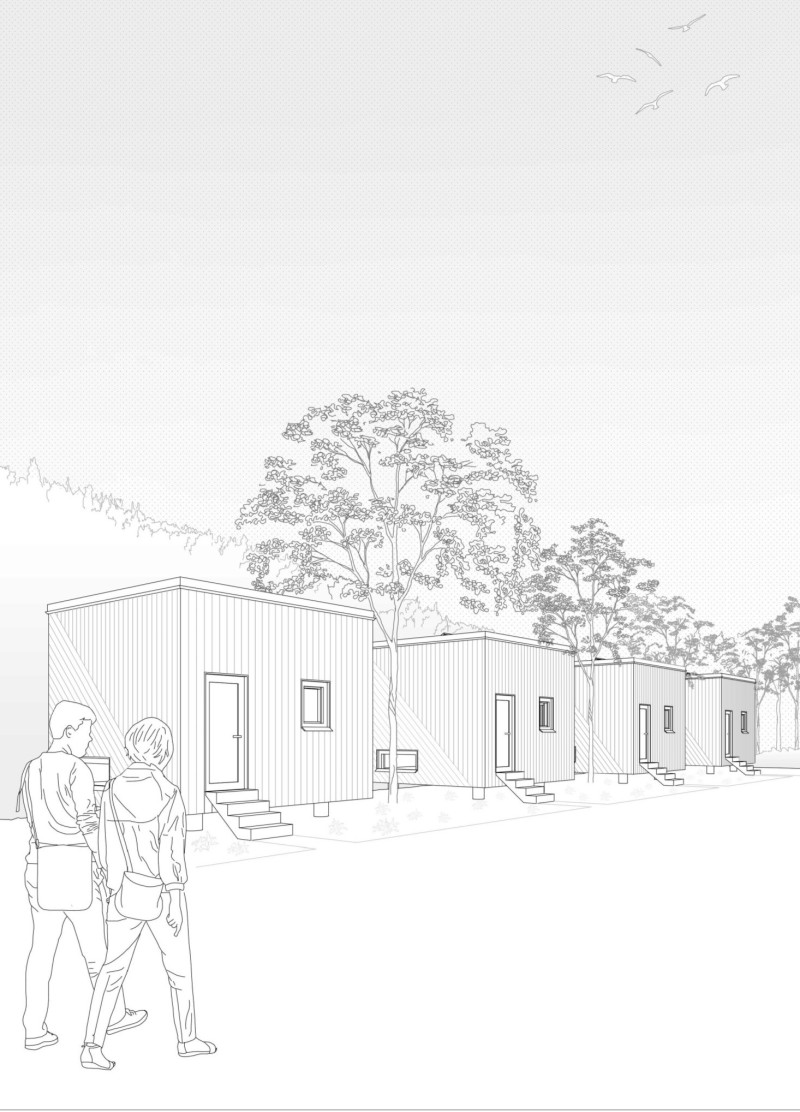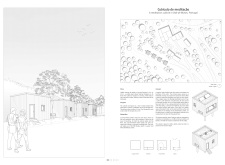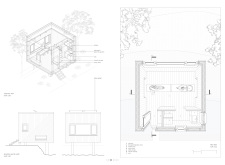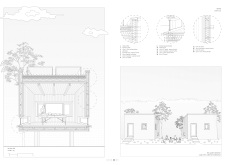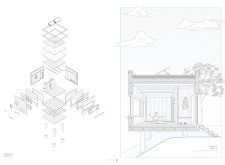5 key facts about this project
At its core, the cubicle presents a simple geometric form that measures approximately 15 square meters, optimizing the available space for various user arrangements. The careful layout divides the cubicle into three functional zones, which include an entrance area, a primary meditation space, and a small storage area. This organization allows for seamless movement between areas while maintaining the essential serene ambiance required for meditation. The design not only prioritizes functionality but also emphasizes a layout that nurtures a connection with the surrounding environment.
One of the most significant aspects of this architectural project is its materiality. The primary structure is constructed using cross-laminated timber, selected for its sustainability, durability, and warmth. This choice not only ties the design aesthetically to the woodland setting but also aligns with current architectural trends that emphasize ecological responsibility. The use of timber contributes to a comforting interior atmosphere, fostering a sense of peace that is crucial for meditation practices. In addition to timber, the architecture incorporates structural steel elements and double-glazed windows, ensuring durability and maximizing natural light, which further enhances the interior experience.
Natural light plays a pivotal role in the overall design, with strategically placed windows that frame breathtaking views of the surrounding landscape. This intentional arrangement allows occupants to engage with nature visually while creating a bright and inviting space. The connection to the outdoors does not end at the windows; pathways and outdoor seating areas extend the meditative experience outside, inviting users to engage with the landscape and facilitating both solitary reflection and social interaction. This unique blend of indoor and outdoor spaces encourages varied forms of meditation, allowing practitioners to choose their preferred environment for focus and relaxation.
Another innovative design approach is the elevation of the cubicle on slender columns, which minimizes the project's footprint on the landscape. This thoughtful detail not only enhances the building’s positioning but also offers panoramic views of the valley, reinforcing the harmony between structure and site. The elevation allows for gentle airflow and natural cooling, reducing energy consumption and enhancing sustainability. Additionally, photovoltaic panels mounted on the roof showcase an integration of renewable energy solutions, making the building a model for contemporary energy-efficient architecture.
Every element of this meditation cubicle has been crafted with intention, creating a space that promotes mindfulness and tranquil living. The unique combination of design features, such as the use of sustainable materials, the relationship with the landscape, and the functional yet flexible spatial organization, sets this project apart as an exemplary model of modern architecture aimed at enhancing human well-being. The architecture not only fulfills its purpose as a serene retreat but also encourages environmental stewardship through its sustainable practices.
For further details, readers are encouraged to explore the architectural plans, sections, and designs that provide deeper insights into how these thoughtful ideas were executed in the project. Engaging with these elements will not only enhance understanding but also inspire appreciation for the refined approach to creating a mindful architectural space.


